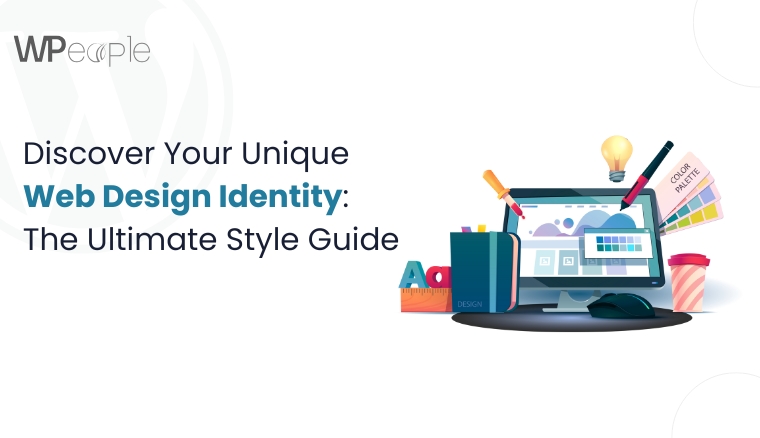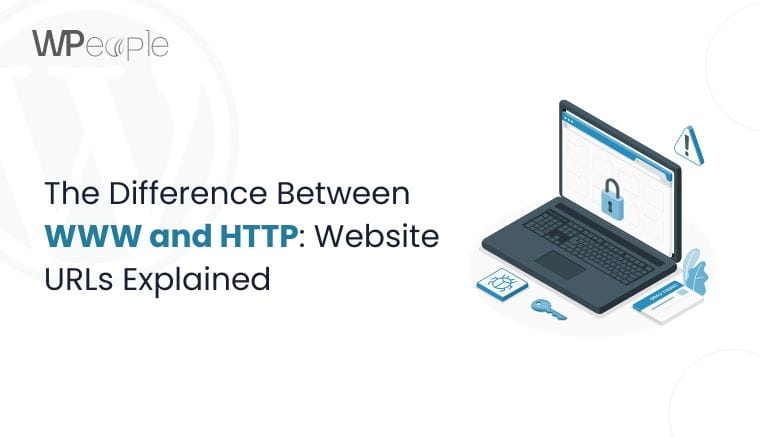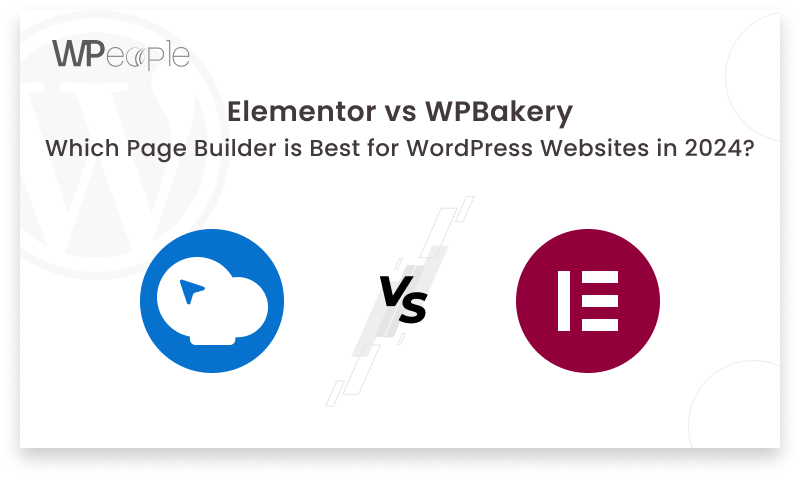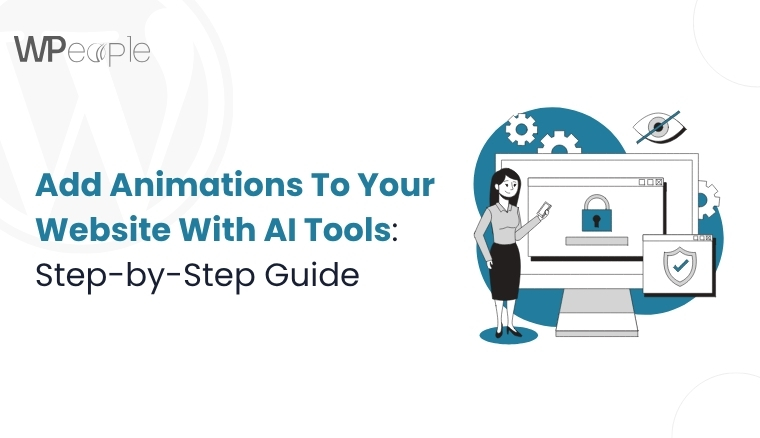
Did you know that websites with animation see up to 40% longer user engagement and 10-25% higher conversion rates compared to static designs? In an era where users scroll faster than they blink, grabbing attention within the first few seconds is paramount.
But here’s the catch: traditionally, website animation meant hiring a developer or mastering code-heavy tools like CSS, JavaScript, or After Effects. That’s expensive, time-consuming, and not scalable for most creators or small teams.
Now imagine this: you type in a few prompts, upload a brand asset, or describe your design mood. And a smart AI turns it into smooth, elegant website animations. Sounds like a sci-fi movie scene? It’s not. Thanks to AI web animation generators and low-code AI animation tools, that future is a reality now.
Whether you’re a creative designer, a startup founder, or a DIY website builder, this blog is your complete guide to learning how to animate websites with no code using AI-powered motion design.
You’ll explore how artificial intelligence is transforming website animation in 2025. You will also discover step-by-step tutorials and the best free and paid AI tools for effortless animation.
This guide will show you exactly how to create interactive animations for the user experience that feels both futuristic and meaningful without touching a single line of code.
Let’s get started!
Why AI Animation Is The Future Of Web Design
The digital landscape is evolving faster than ever. In 2025, attention spans are shrinking, and static websites no longer cut it. Users expect immersive, interactive, and emotionally resonant experiences the moment they land on a page. This is where AI-powered animation steps in.
AI in web design is no longer a futuristic concept; it’s a present-day powerhouse transforming the way we build digital experiences.
Instead of writing lengthy coding lines or spending hours on manual animation frames, designers can now use AI to generate seamless motion, personalized transitions, and dynamic interactions in minutes.
Artificial intelligence is shaping web animation trends in 2025 in the following three key ways:
- Speed and Efficiency: AI automates what once took days, generating high-quality animations in minutes.
- Personalization: AI personalizes animations based on user behavior, device type, and interaction patterns.
- Consistency and Scalability: Brands can maintain visual harmony across platforms and pages without repetitive manual work.
AI provides subtle hover effects to engaging page transitions. It empowers you to create animations that are not only visually appealing but also deeply functional and performance-optimized.
What You Should Know: AI is revolutionizing modern web design by making animation savvy, quicker, and more user-centric. If you want to stay ahead of web design trends in 2025, AI animation is no longer optional; it is essential.
What Is Website Animation And Why Does It Matter?
Website animation refers to using motion graphics or transitions to elevate the user engagement on a website. It can include everything from animated page loads and scrolling effects to interactive buttons and character-based visuals.
At its core, website animation is about storytelling. It creates rhythm, visual interest, and emotional interaction, something static pages often lack. Well-executed animation can guide attention, communicate hierarchy, and reinforce a brand’s identity.
Today, motion design benefits go far beyond aesthetics:
- Improves User Experience: Animations can indicate progress, draw attention to calls-to-action, and reduce cognitive load.
- Boosts Engagement: Users spend more time on websites that feel alive and interactive.
- Clarifies Navigation: Micro-interactions and motion cues help users understand how to steer through a website.
- Strengthens Brand Identity: Motion adds personality and consistency to your site’s visual language.
From loading spinners and menu transitions to full-page animated sections, motion has become an integral part of the present-time UI animation strategies.
In a Nutshell: Website animation is a vital tool for creating intuitive, engaging, and brand-aligned user experiences in a highly competitive digital space.
How AI Is Transforming Web Animation In 2025
Artificial intelligence is no longer a futuristic concept in web design; it is the creative engine powering present-day motion experiences. In 2025, AI tools are reshaping how designers, developers, and even non-technical creators add animations to websites.
AI animation tools can generate shrewd, interactive animations in seconds. These tools understand user intent, apply design principles automatically, and even optimize for performance and accessibility.
Here is how AI web animation is making a difference:
- Automation With Intelligence: AI analyzes layout, hierarchy, and content to recommend or generate animations that feel intentional and seamless.
- Time-Saving Design: What used to take hours in CSS or JavaScript now takes minutes with AI-powered animation interfaces.
- Adaptive Motion: Some platforms customize animations dynamically based on device, user behavior, or content type.
- Low-Code to No-Code Solutions: Low-code AI animation tools let marketers, bloggers, and business owners animate elements with minimal effort.
Tools like Uizard, Dora AI, and Wix’s AI-powered animation engine allow creators to build immersive animated websites using drag-and-drop simplicity and intelligent suggestions.
Whether you’re creating micro-interactions, scroll-based reveals, or animated illustrations, artificial intelligence in design makes it more rapid, accessible, and surprisingly intuitive.
Key Takeaway: AI is redefining motion design in 2025 by making web animation quicker, smarter, and more accessible. No advanced coding or design background (qualification) is required.
Top AI Tools To Add Animation To Your Website (Free And Paid)
In 2025, adding animation to your website no longer demands hours of code or expensive motion design software. Thanks to a new wave of AI animation tools. You can make your website vibrant in minutes, irrespective of whether you’re a designer, marketer, developer, or solo creator.
Below are some of the best AI tools for animation, both free and paid, that offer impressive capabilities without the complexity.
| Tool Name | Use Case | Key Features | Pricing | Highlight |
| Wix ADI | Beginners who want fast animated websites | Built-in transitions, scroll effects, and AI layout creation | Free basic, premium from $16/month | Ideal for no-code users needing quick, animated site creation |
| Uizard | Low-code UI prototyping and animation | AI mockups, animated elements, drag-and-drop interface | Free basic, premium from $12/month | Excellent for teams focusing on UX with interactive animation |
| LottieFiles + Lottie AI | Lightweight motion graphics | JSON animations, AI text prompts to motion, easy embeds | Free with paid team plans | Perfect for growth-friendly vector-based web animations |
| Dora AI | Interactive, 3D animated websites | Parallax, scroll, and hover effects powered by AI | Freemium model | Best for visually rich, storytelling websites |
| Spline AI | 3D animation for modern web design | AI modeling, 3D interactions, web export options | Free with pro features | Ideal for creatives using 3D visuals and animations |
| Framer AI | Sleek, responsive animated website design | AI layout generation, built-in transitions and motion | Free personal, premium from $5/month | Blends AI web design and smooth animation in one platform |
| Animoto | Animated videos for storytelling and marketing | Pre-built motion templates, video to site background animation | Free tier, premium from $16/month | Practical for marketers adding visual impact through motion video |
Smart Summary: This selection of free and paid AI animation tools empowers anyone to animate their website without technical hurdles. Whether you want quick scroll effects or immersive 3D visuals, these platforms let you build animated experiences with ease.
Step-By-Step: How To Add Animations To Your Website Using AI
Adding animations to your website using AI might sound like a job for developers or designers. However, cutting-edge AI tools have made this effortless for anyone, even without technical skills. You can follow the simple step-by-step process to create smooth, interactive animations using AI tools.
Step 1: Define Your Animation Goals
Before you start designing, ask:
- What is the purpose of this animation? (e.g., guide user attention, improve engagement, highlight a CTA)
- Where should it appear? (hero section, scroll interactions, navigation, etc.)
- How much movement is appropriate for your brand?
Pro Tip: Subtle, purposeful animations typically perform better than over-the-top effects.
Step 2: Choose The Right AI Animation Tool
Pick a tool based on your needs:
- No-code beginners: Wix ADI, Framer AI, Uizard
- Creative animations: Spline AI, LottieFiles, Dora AI
- Interactive elements: Framer, Lottie + Code
Need help choosing? Refer back to our comparison table in the previous section.
Step 3: Use AI To Generate or Customize Your Animation
Most AI tools offer one of two methods:
- Auto-generation: Describe what you want, and the AI builds it. Example: “Create a scroll-triggered animation with a fade-in effect.”
- Template customization: Start with a template and tweak animations, transitions, or effects using drag-and-drop or AI suggestions.
Step 4: Preview And Test The Animation
Before publishing:
- Test responsiveness across devices.
- Ensure animations load swiftly (watch your page speed).
- Check if animations are accessible (e.g., reduced motion settings for users who prefer minimal motion).
Step 5: Embed or Publish
Once you’re happy with your animation:
- Export as code snippet (e.g., Lottie JSON or iframe) or directly publish through your website builder.
- Just hit the publish button for tools like Wix or Framer.
- Embed manually or use plugins for WordPress or custom code.
The Bottom Line: What once required complex coding can now be done in minutes because of AI Animation Tools. Whether you’re building a landing page, portfolio, or product website, these steps help you bring motion and interactivity to life without the guesswork.
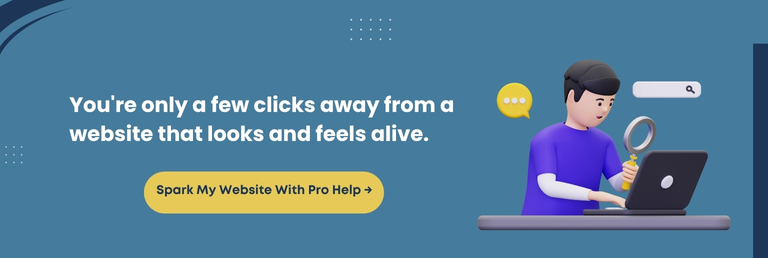
Use Cases: Where And When To Use Animation On Your Website
Using animation thoughtfully can turn an ordinary website into an engaging, intuitive, and delightful user experience. But not every corner of your website needs to bounce, fade, or slide. Here are the best places to use AI-powered animation effectively.
| Use Case | Where to Use | Example Application |
| Hero Section Animation | At the top of your homepage to make a memorable first impression | Animate product images or use motion graphics to tell your brand story |
| Call-To-Action (CTA) Buttons | Throughout landing pages and key user flow areas | Add hover effects, pulse animation, or subtle expansions to draw clicks |
| Scroll-Based Storytelling | Blog posts, product pages, or educational content | Reveal content gradually as users scroll, creating an immersive experience |
| Navigation and Transitions | Menus, page changes, and modal popups | Use fade-ins, slide transitions, or AI-enhanced flow animations between pages |
| Loading and Progress Indicators | When content or actions take time to process | Branded or creative loading animations generated by AI tools |
| Interactive Product Demos | Product or feature overview sections | Animate dashboards or app interfaces to simulate user interactions |
| Testimonials and Stats | Trust-building sections like reviews and data visualization areas | Use animated counters or rotating quotes for enhanced engagement |
Web animation is most effective when it serves a purpose, be it storytelling, guidance, or engagement. Thoughtfully applied animation can improve UX, clarify content, and elevate brand personality.
What This Means For You: AI tools make it more effortless to integrate motion in ways that are smart, lightweight, and impactful. Use AI to animate the appropriate elements in the right places and watch your user experience come alive with elegance and clarity.
Tips For Creating Smooth, SEO-Friendly Website Animations
Animations can amaze you, but they can also drag down performance and accessibility if not implemented thoughtfully. It’s vital to blend creativity with technical best practices when using AI-powered animation tools.
Best Practices For Effective Web Animation
| Tip | Why It Matters |
| Prioritize Lightweight Animation | Heavy animations can slow page speed. Use SVGs or CSS-based motion instead of large video or GIF files. |
| Respect User Preferences | Always enable reduced-motion settings for accessibility compliance and user comfort. |
| Keep It Purpose-Driven | Don’t animate just for flair. Every motion should guide, inform, or enhance the user experience. |
| Use Lazy Loading | Delay off-screen animations until needed to optimize load times. |
| Test Across Devices | AI-generated animations must be mobile-optimized and responsive across different screen sizes. |
| Compress and Minify Code | Whether AI generates JavaScript or CSS, compress files to boost site performance. |
| Monitor Core Web Vitals | Use tools like PageSpeed Insights to ensure animations don’t harm performance metrics. |
Knowledge Drop: Use AI to enhance your website, not to overcomplicate it. Fast, responsive, and accessible animations not only engage visitors but also support your SEO and usability goals.
Common Mistakes To Avoid When Using AI For Web Animation
Though AI animation tools simplify the process, automation can also lead to avoidable missteps. Here are the most common mistakes you should steer clear of when adding animations to your website with AI:
Overusing Animation
Too many animated elements can distract users, clutter the interface, and slow down your website. Use animation judiciously and intentionally.
Ignoring Accessibility
Many users prefer reduced motion or have motion sensitivity. Failing to respect accessibility settings like prefers-reduced-motion can enrage or frustrate visitors.
Using Generic, impersonalized Animations
AI-generated animations often need customization. Relying entirely on default outputs can result in designs that feel impersonal or disconnected from your brand.
Neglecting Page Speed Optimization
AI tools may insert extra code or heavy assets. Animations can affect load times, page performance, and Core Web Vitals if left unoptimized.
Incorrect Trigger Timing
Animations that start too early or lag behind user actions can confuse instead of guiding. Make sure each animation supports user interaction intuitively.
Skipping Cross-Device Testing
What looks smooth on a desktop might glitch on mobile. Always test AI animations across browsers and devices to ensure uniformity.
Poor Semantic Structure
Some AI tools might wrap animations in non-semantic HTML. It can harm SEO and accessibility if not corrected manually.
Must-Know Insight: AI animations need the right balance between automation and intentionality. Keep usability, performance, and accessibility in focus to ensure your animations enhance user experience and do not hinder it.
Examples Of Stunning Websites Using AI-Powered Animation
Want to see AI web animation in action? These standout websites utilize AI-driven animation to elevate user experience, communicate brand personality, and create memorable moments without compromising speed or usability.
RunwayML Showcase Page
Runway uses its own AI video and animation tools to power rich, interactive experiences. Hover effects, scroll-based transitions, and background animations are smooth and meaningful, adding flair without distraction.
Framer AI Landing Pages
Framer’s AI-generated landing pages are excellent examples of real-time animations built from low-code inputs. Fluid page transitions, animated headers, and the clever image reveal all blend seamlessly.
Spline (spline.design)
Spline offers 3D design and animation tools, some powered by AI. Its homepage integrates animated 3D assets that respond to mouse movement, creating depth and immersion with ease.
Wix Studio Templates
Wix now includes AI animation generation in its Studio offering. Templates often feature smooth entrance effects, responsive motion, and intelligent behavior based on user scrolls and clicks.
Webflow AI Concepts
Webflow experiments with AI to generate animations grounded in design intent. Some community websites show real-time generated animations that align with user interaction patterns and content type.
LottieFiles + AI Integration
Websites using LottieFiles with AI-generated animations showcase how micro-interactions (e.g., loading icons, form confirmations) can be lively and lightweight.
Final Thought: AI-powered animation is already transforming present-day web aesthetics from subtle micro-interactions to full-page storytelling. Draw inspiration from these examples to guide your own creative strategy.
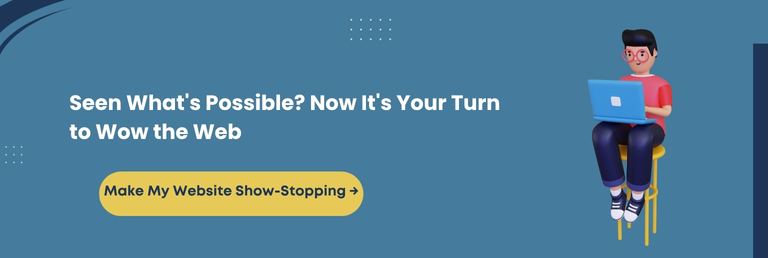
Conclusion
AI has swiftly transitioned from a buzzword to a powerful creative ally, especially in the world of web animation. We are currently living in an era where attention spans are shorter and expectations are higher. With AI in your toolkit, you don’t need to be a proficient coder or a competent motion designer to create ‘WoW’ animations.
Throughout the blog, we explored how AI tools are redefining what’s possible in motion design, from streamlining complex workflows to breathing life into static elements.
You’ve also learned how animation can enhance engagement, guide user flow, and even improve SEO. Most importantly, you now have the practical steps and tools to turn dull websites into immersive experiences that leave a striking impression.
Start small. Animate a button, a headline, or a scroll interaction. Use AI to test what works and evolve as your website grows.
Whether you’re a creative looking to elevate storytelling, a brand seeking better user retention, or a business owner wanting to stand out, now is the time to act. Let AI do the heavy lifting.
Your website can move, guide, and connect. Let it speak volumes beautifully, intelligently, and effortlessly.
FAQ
Can AI Animation Tools Work With WordPress Or Shopify Websites?
Yes, many AI animation tools support integration with platforms like WordPress and Shopify. You can embed animations using plugins, HTML snippets, or by integrating low-code solutions that generate exportable code for seamless use across CMS and eCommerce platforms.
Do AI Web Animation Tools Require Graphic Design Skills?
Not necessarily. Most AI-powered animation tools are built for non-designers. They have intuitive interfaces and ready-made templates. They handle design logic for you, enabling you to create professional animations with minimal technical or artistic background.
Will AI-Generated Animations Slow Down My Website?
They can if not optimized. Use lightweight formats (SVG, Lottie), limit excessive motion, and lazy load animations. Many AI tools now prioritize performance, offering SEO-friendly, responsive animations that maintain swift load times and user experience.
Are AI Animation Tools Safe For Commercial Websites?
Yes, most trusted AI tools follow standard web security practices. However, always check for commercial use licenses, data privacy policies, and export options before using them on client or eCommerce websites.
How Can I Test If My Animation Improves User Experience?
Use tools like Google Analytics, Hotjar, or A/B testing to track engagement metrics, scroll depth, and bounce rates. You’re on the right track if users interact longer or convert more after adding animation.
Consult with Our WordPress Experts On:
- WooCommerce Store
- Plugin Development
- Support & maintenance


